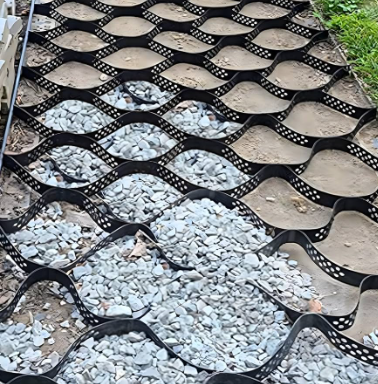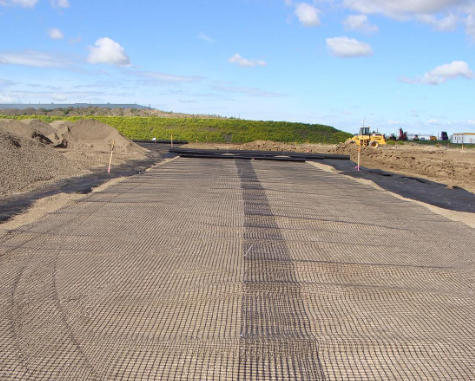- Understanding the Role of Geomembrane Liners in Waste Management
- Innovations in Geomembrane Liners for Water Management
- Geomembrane Liners: A Comprehensive Guide
- The Future of Geomembrane Liners in Civil Engineering
- Geomembrane Liners: Enhancing Landfill Stability
Manager:
WhatsApp:+86 177 0135 2670
Tel:+86 177 0135 2670
Email:marketing@okorder.com
Address:3rd Floor, No.2 Building, No.1 Sanlihe Road
What is the disadvantage of geogrid?
These include plastic geogrid, fiberglass geogrid, wholesale geogrid, and glassfiber geogrid which have all become essential materials in various civil engineering projects. These products are known for their qualities such as enhancement, stabilization, and retention of soil. However, like other construction materials, there are also some disadvantages that come with using the geo-grid. This information is important to engineers and contractors when selecting geo-synthetic products for their projects.

The Limitations and Challenges of Plastic Geogrid
Plastic geogrids made from polymers such as polyethylene or polypropylene have several demerits that need to be considered by engineers. One major drawback is its susceptibility to degradation under ultra violet (UV) light exposure. In course of time, excessive sunlight can make plastic geogrids brittle and weak making them unable to perform their function in enhancing the soils or stabilizing slopes.
Moreover, some environmental conditions may lead to poor chemical resistance of plastic geogrids. The existence of harsh chemicals or pollutants in either soil or water can hasten the rate at which plastic geogrids get destroyed thus resulting into early collapse hence requiring expensive maintenance services thereby forcing one to seek replacements.
Apart from environmental factors; specific attention needs to be paid during installation process of a plastic geogrid. Poor installation procedures such as insufficient anchoring or inaccurate placement might lessen the efficiency of a geogird while compromising stability of the engineered structure itself. It therefore deems necessary for these constructions projects that proper training and supervision should be conducted prior deployment so as ensure successful usage.
Wholesale Geogrid: Cost Considerations and Quality Control
Wholesale purchasing enables buyers to reduce costs on this product though it still has certain deficiencies associated with quality control and consistency which they must take into account during procurement decision-making processes. Engineers and contractors should scrutinize any geogrids they order in large quantities from wholesales to ensure that the product is of good quality and meets specifications.
One disadvantage of wholesale geogrids is their variable material properties and production procedures. For example, different suppliers or batches of production can manufacture geogrids having different values for tensile strength, aperture size, or dimensional stability which affect performance and reliability during construction purposes.
In addition to this, wholesale geogrids reduce the flexibility of project specifications and customization options. It could be difficult for engineers to tailor a geogrid’s attributes so that it can match particular soil conditions, loading requirements or design parameters making the long-term durability and effectiveness of this engineering solution less efficient.
To mitigate these disadvantages, contractors should establish rigorous quality assurance protocols as well as carry out testing/inspection exercises on the wholesale geogrids prior to installation. In addition, working with reputable suppliers or manufacturers will enhance uniformity and dependability for bulk procurement of geogrid products.
Durability and Environmental Impact of Fiberglass Geogrid
Fiber glass grid made from woven or nonwoven glass fibers have high levels of tensile strength thereby being suitable for use in pavements reinforcement projects as well as stabilization works on soils. However, fiberglass grids also pose some challenges that must be taken into consideration by engineers during planning and execution phases.
Notably, fiberglass geogrids have relatively high environmental impacts compared to other alternative materials available. The process used in producing glass fibers utilizes lots of energy while leading to carbon footprinting hence pollution caused by emissions. Moreover, when they reach their end-of-life stage disposing them becomes problematic because these are non- biodegradable materials that would require proper waste management techniques if they were not meant to overload landfills.
Moreover, fiberglass geogrids can sometimes be rigid and resistant although their flexibility is restricted in some applications. In contrast to polymers or natural fibers, which are used for making flexible geogrids, fiberglass grid may turn out to be rigid and hard causing installation problems on the rough and uneven surfaces. Engineers must carefully evaluate the suitability of fiberglass geogrids for specific project requirements and consider alternative reinforcement solutions where flexibility is paramount.
However, when properly designed and installed, glass fiber grids have been known to exhibit excellent long term performance as well as structural stability. This calls for comprehensive geotechnical designs that incorporate fiberglass geogrids considering environmental effects including life cycle assessment.
Performance Limitations And Compatibility Of Glassfiber Geogrid
Glass fiber geogrid shares properties such as strength and durability with its counterpart fiberglass grid since they both share a common base material of glass fibers in their production process. Nevertheless, the use of this type of material has some specific demerits associated with performance limits it imposes along with compatibility issues concerning other construction materials used.
One limitation of glassfiber grids is their possible susceptibility to chemical degradation under certain aggressive environments. When exposed to acidic or alkaline substances in soil or water over time, the integrity of glassfiber grids could deteriorate resulting in reduced tensile strength and poor capacity as reinforcement elements.
Compatibility during installation and integration into composite structures may be an issue because glassfiber grids might not blend well with other construction materials like asphalt or concrete. For example expansion coefficients arising from differences thermal among them will affect bonding hence creating interfaces cracks hence failing under load or even not provides any mechanism for preventing crack propagation thus reducing efficiency of such systems regarding load distribution using these grids.
To overcome these limitations engineers should conduct extensive studies on compatibility by applying chemical-resistant coatings or barrier layers which will prolong lifespan of glass fiber grid products exposed to harsh environment conditions like acids bases etc. Also attention needs to be drawn to construction methods and materials employed in order that proper interfacial bonding and conductance between glass fiber grid with the adjoining constituents are maintained.

Notwithstanding, geogrids, which are used for reinforcement, stabilization and soil retention among others in civil engineering have their own demerits as well. Poor chemical resistance and low degradation of plastics geogrids is one area of concern while wholesale geogrids have often been characterized by inadequate quality control. Environmental effects, compatibility problems along with performance limitations also interfere with the use of fiberglass or glassfiber grids despite their durability and strength. By understanding these disadvantages and implementing appropriate mitigation strategies, stakeholders can effectively leverage the advantages of geogrids while minimizing risks and ensuring the long-term success of their projects."
-
2024-06-12Asphalt fiberglass geogrid construction plan
-
2024-06-04Asphalt fiberglass geogrid construction plan
-
2024-05-21What is the disadvantage of geogrid?
-
2024-05-21What is the lifespan of geogrid?
-
2024-05-21What are the 3 main uses of a geotextile?






